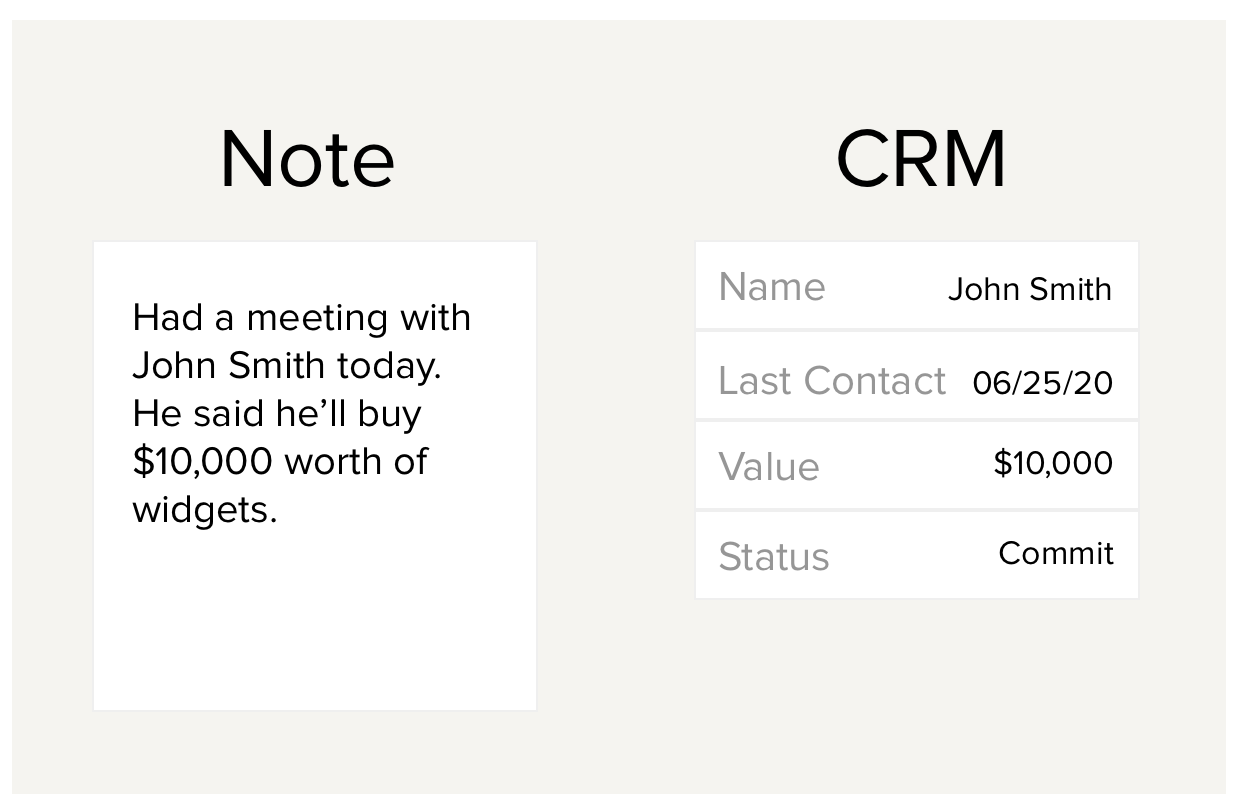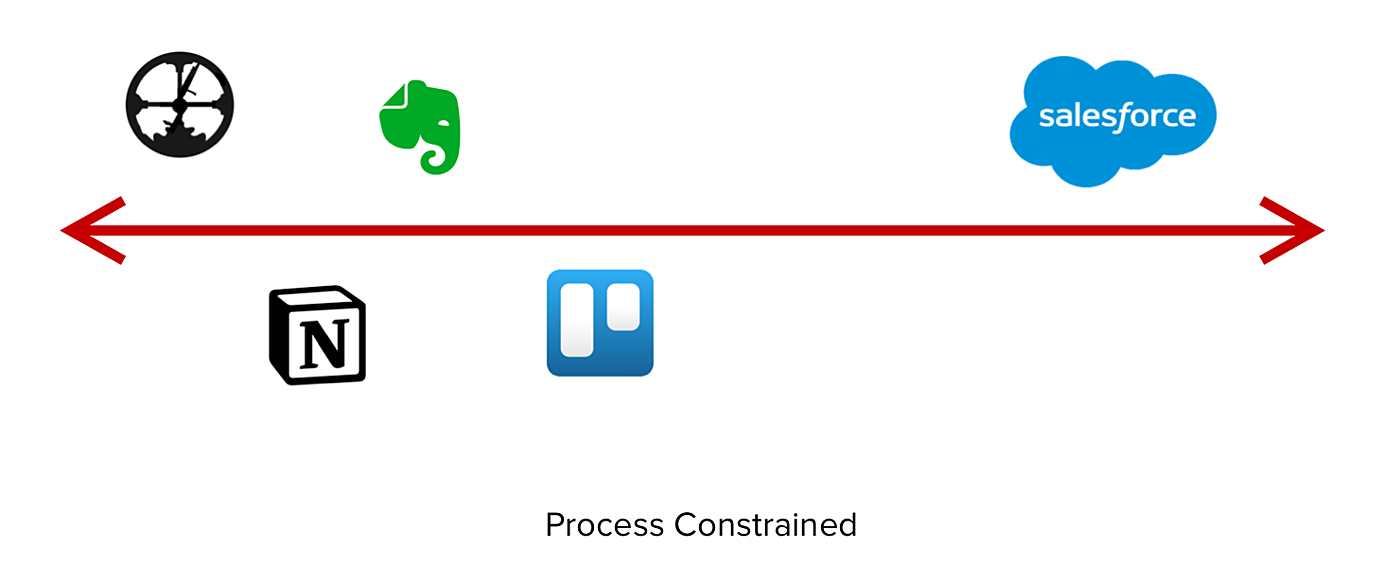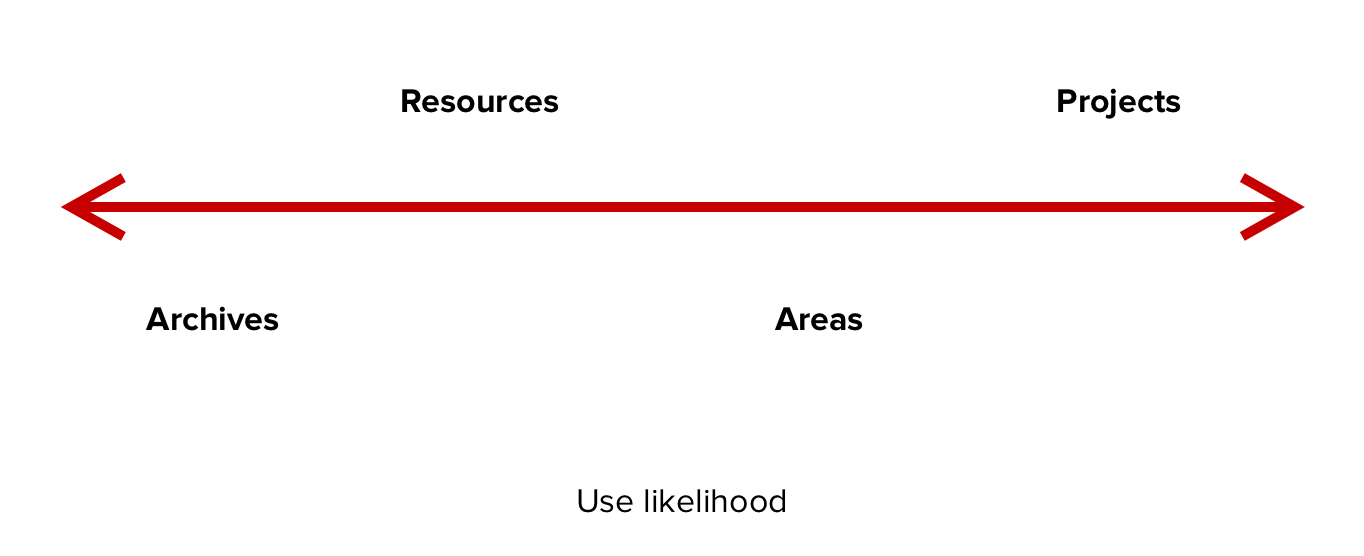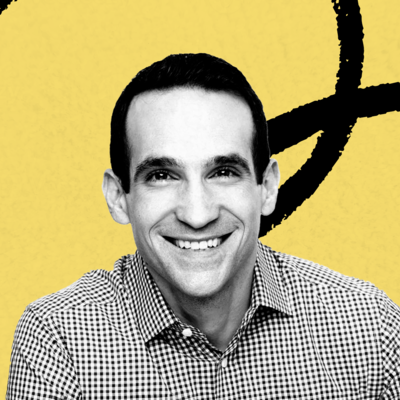
“The trail of the human serpent is thus over everything.” - William James
How should we organize our notes?
It’s the bugbear of almost every productivity nerd, and answers abound: notebooks, tags, stacks, kanbans, links, bi-directional links.
In fact, there are so many answers to this question that people in our little corner of the internet actually fight about how to organize notes.
(Tiago is, of course, the creator of the organizational system PARA and fellow Everything bundle member. Conor is the creator of Roam.)
The lines of battle have been drawn this way:
Tiago thinks notes should be organized by actionability, and that each note should go in one and only one place in the following categories: Projects, Areas, Resources, Archives.
Conor thinks that notes should go everywhere, and that there’s no single top-down structure that can encapsulate all note-taking.
They’re both extremely intelligent and thoughtful about this topic — so why do they disagree so thoroughly? And how should we decide between them?
I think if we take the time to actually examine the disagreement we’ll be surprised. I don’t think they actually disagree about as much as it may seem. Second, I think gaining a better understanding of the philosophical source of their dispute will help to make us better note takers, and importantly, better thinkers.
Ready to dive in? Let’s go.
1
Let’s start at the beginning. Why are we fighting in the first place? Why is organizing notes so hard?
That’s a good question to ask.
One obvious answer is that organizing information is just hard. But it turns out that it’s only really hard for certain types of information.
You’ll notice that there’s no great debate about the best way to organize the information inside of a CRM. It’s fairly obvious how to do that: a CRM should be a long list of customers.
If you want to get slightly more complicated with it you’d include a hierarchy. Each customer contains a list of attributes like name and address and phone number. Each customer is then contained inside of a company. Companies are contained inside of a geography.
You can see here, we just built a very basic organizational system for a CRM in a few sentences. It’s not so hard. There’s room for disagreement over details. But no one is disagreeing over the fundamentals in the same way that note-taking nerds are.
So why are notes different?
2
One way to think about knowledge management is as philosophy in action:
As we think about the best folder structures and tag hierarchies, we’re really doing philosophy. And it turns out that there’s a two-thousand-year-old debate in philosophy that’s pretty similar to the debate between Tiago and Conor.
Instead of being about how notes are organized, it’s about the way the world is organized.
The questions that this battle attempts to ask are things like:
What is the world?
What is it made up of?
How do its constituent parts relate to each other?
And how do we know?
On one side of the debate, roughly are people who believe that there is a world out there, that it is universal, objective, and accessible by the human intellect.
We’ll call these people essentialists. (Philosophers like Plato, Kant, and Descartes all fit under this label — though their philosophical stances vary widely)
Essentialists think about truth in a very specific way. They think that a statement is true when it reflects something essential about the way reality is organized. They think truth is defined as a relationship between a statement and a state of the world.
One the other side of the debate are people who choose not to answer that question directly. They believe, roughly, that there is no objective place from which to decide what is true. They believe that there are many different ways to represent and organize reality.
We’ll call these people pragmatists. (Philosophers like James, Wittgenstein, and Rorty — though their philosophical stances vary widely.)
Essentialists have a representational theory of truth. They believe that a statement is true when it represents the state of reality accurately.
Pragmatists have an instrumental theory of truth. They believe that a statement is true when it works — that the only way we can know if something is true is if, by acting according to it, the world reacts in the way we expect it to.
To a pragmatist, statements aren’t more or less true in the sense that they more or less accurately represent reality — statements are just more or less useful. The useful ones we call “true” and the not useful ones we call “false.”
Essentialists think pragmatists have a childish version of truth. They think that pragmatists are arguing that everyone can have their own personal version of the truth, which is counter to the very idea of truth.
Pragmatists think essentialists spend too much time reading books and not enough time paying attention to how life actually works.
More importantly, because of the way they think of the world, essentialists and pragmatists engage in significantly different ways of organizing it.
Essentialists have a hierarchical view of the world. Each object in the world should fit into one and only one category, and each category should nest within a well-defined hierarchy. You can see essentialist principles in many places — like the system we have for categorizing animals, Linnaean taxonomy. Each animal fits into one and only one kingdom, species, genus, etc.
For essentialists, it’s the philosopher’s job to define these categories and figure out where each thing in the world fits. Each thing has one and only one true place.
The pragmatic organizing project is very different. Pragmatists tend to have a networked, relational view of the world. They believe things are defined by their relations to other things, and that there are many different, valid ways to interpret what objects are in the world and how they relate to each other.
To a pragmatist, what we call an object and how we categorize those objects are just a matter of perspective. Objects in the world can be placed in many different categories at once — we choose which categories and relationships are most relevant based on context.
To make this more concrete think about a chessboard. In our everyday experience, it feels like a solid and self-contained object. But we also know scientifically that it is made up of billions and billions of invisible atoms.
So, is a chessboard one thing or is it billions and billions of things?
Essentialists might say that it is one thing — a chessboard. That it participates in some fundamental way with the is-ness of a chessboard. Other kinds of essentialists may say that though we call it a chessboard, that is actually just a nice shorthand for what it really is which is a collection of atoms arranged in a certain way that looks like a chessboard.
By contrast, pragmatists just shrug. They say it is both a chessboard and it is a collection of atoms. A chessboard is one way to talk about it in a particular context. A collection of atoms is another way to talk about it in other contexts. Both are useful shorthands, but they don’t indicate anything essential or deep about the chessboard itself. They’re just more or less useful descriptions.
Essentialists are trying to find the fundamental piece of reality that makes things what they really are.
Pragmatists just think there are lots of different ways to describe reality and some ways are more or less useful in certain contexts.
3
Okay so let’s go back to the original question: why do we debate how to organize our notes when we don’t debate how to organize a CRM?
To start to answer this question we need to notice something really important about software: all software does the same thing.
Software lets us record information, store it, transform it, and then retrieve it at an appropriate point in the future.
That’s what every piece of software does. Some pieces of software we call spreadsheets, some software we call CRMs, some we call Facebook, some we call Mario Kart. But they’re all fundamentally the same thing.
They’re just ways to record, store, transform, and manipulate information.
But somehow a CRM feels different than a notes app. That’s because CRMs attempt to represent the world. CRMs have all of these interesting objects inside of them. They have customers, they have companies, they have geographies. All of these things exist in a hierarchy — customers are inside of companies, companies are inside of geographies — and the hierarchies very much correspond to something true about the way the world works.
By contrast, notes apps don’t do that. You’ll find no “customer” or “book” organizational structure inside of a notes app.
Instead, we have “notebooks” or “notes” or “pages.”
This may look similar to the information structure inside of a CRM, and in a way that’s true. A CRM has customers, and a notes app has notes.
But it’s fundamentally different in an important way. In the case of a CRM the “customer” is a direct representation of something in the real world that you’re trying to record information about. When you use a “customer” record in a CRM it’s because you’re recording something about a real-life customer.
When you use a “note” in Evernote you are not writing about notes. You are writing about an undefined and infinite number of different things. “Note” is just a catch-all term for a blank page. A “note” is a box you can stick anything into.
If you’re paying attention, you’ll notice that this relates in a deep way to the essentialist vs. pragmatist debate.
A CRM is an essentialist piece of software. A CRM knows the essential objects in the world that it needs to care about: customer, company, and geography. It creates information structures to represent those objects, and then relates them together in a unified and standardized way. A CRM is creating a little model of one corner of reality.
A notes app is not essentialist in the same way. Yes, it has a notebook and note structure but those are more or less unopinionated containers. When it comes down to the actual information contained inside of those notes, it throws its hands up and says, “I don’t know the structure!” and just gives you a big blank box to throw all of the information into.
Why is that?
You might think the answer is, Ah, the people who make notes apps are pragmatists and the people who make CRMs are essentialists. But actually, no. I think this sliding scale of organization from rigid and hierarchical to flexible and networked is actually an example of pragmatism in action.
Pragmatism doesn’t preclude rigid, hierarchical organizational systems — it just tells us that there are infinitely many such systems, and some of them are useful in specific contexts.
When the context becomes more clear, it is actually useful for the organizational system to become more rigid and hierarchical — it’s not a bad thing!
I think by default, the people who design software have to be pragmatic about the way information is organized. What that means is that whether you’re building a CRM or a notes app you’re following this principle:
The more precisely we know what to use a piece of information for, the more precisely we can organize it.
In the case of a CRM you know that you’re going to use the information as part of a sales process. So in the first place, it’s got to be very important to record customers and record key details about those customers like:
- Their name
- Their address
- Where they are in the process of being sold
- The potential value of the deal
Because it’s possible to know in advance how the information is going to be used, it’s possible to create atomic objects like “customers” where we collect standardized pieces of information and then relate that information together in a uniform, universal, hierarchical way.
Notes, in the broadest sense, are not like this. They cannot be depended on to be part of a standard, well-defined process. A piece of information is a note when you have only a vague idea of how it will be used. Or, when you have one idea of how it will be used, but you think there may be many more ways it could be used down the road, too — it’s hard to predict.
Should the book note go into the notebook that tracks all book notes? Or should it go into the project that I’m currently working on that relates to it? Or should it go into a notebook that tracks all of the authors I’m reading? Or, because it’s about software design, should it go into the software design folder?
I might want to use the note in so many different contexts and places, it’s very hard to know the one precise place it should be filed. Many organizational structures might work, and it’s hard to know which one to pick.
4
If we zoom out we can use this pragmatic insight to map every piece of software on a spectrum:
On the left hand side are notes apps — these are apps that record and process information as part of an undefined process. On the right hand side are things like CRMs — these are apps that enable their users to record and process information as part of a well-defined process.
The more well-defined the use-case the more rigid and hierarchical, the more deeply the organizational structures we use try represent the world.
The less well-defined the more flexible we get. The further to the left of the spectrum, the more we use many different types of organizational structures for the same information, and our hierarchies look more like networks than trees.
5
Now let’s get back to Tiago and Conor.
On the face of the issue they look like opposites.
Tiago looks like an essentialist — someone who believes in a rigid hierarchy of information, who thinks that notes should go in one and only one place.
Conor looks like a pragmatist — someone who believes that there are infinitely many different ways to organize the same information, and information should go in multiple places.
But actually I think they’re both pragmatists. I think they both think that it is hard or impossible to predict what a note will be used for, and that therefore there are infinitely many organization systems that could be used to order them.
They’ve just chosen to do different things with that belief.
Imagine you’re in their shoes. You believe that notes contain pieces of information whose use is unpredictable. You want to help people solve the problem of organizing these notes.
What we learned earlier is that the less you can predict how you’ll use information the more flexible the system you’ll need to organize it. The more you can predict how you’ll use information the less flexible the system you’ll need.
If you want to be able to organize notes, you need to do one of two things:
- Make the use of the notes more predictable and part of a well-defined process
- Create an infinitely flexible organizational system
Tiago picked the first move. Conor picked the second. Each choice has its pros and cons.
Tiago’s Process
Tiago’s approach is to create a well-defined process that applies to a segment of knowledge workers, and then use existing organization systems to help him represent and run that process.
The core insight of PARA is two-fold:
- The job of every knowledge worker is to produce work
- Given (1) all notes can be organized according to how likely they are to be used in the work you are producing
Put simply, Tiago’s organization process is about actionability. Once you’ve centered your organizational process around actionability, categories start to emerge:
On the right side are projects — these are the most actionable. On the left side are archives — these are the least actionable. You’re most likely to use information in Projects and least likely to use information in Archives and information flows back and forth between all four categories constantly.
Notice how Tiago can create a well-defined process for where a note should be by introducing the actionability constraint. Once we know what notes are for — to take action on a piece of work — we can create a system around it. Categories like “Projects”, and “Archives” then begin to emerge organically.
Tiago has taken the network of information that makes up our notes, and reduced it to a hierarchy in order to make it more usable.
If you need more evidence that PARA is pragmatic, you should take a close look at how Tiago talks about it. He’s specifically designed it to be flexible enough for practitioners to pick and choose which parts of the system are worth doing and which ones aren’t. Do you not find Areas useful in your organization system? Throw it away!
PARA is exactly what most knowledge workers need. It doesn’t work for everyone, but it does work for a lot of people. And that’s really all Tiago wants to do — he doesn’t need to define the one true and correct system of organization for all time. He just needs one that’s good enough to help his students get organized and get back to doing their work.
And that’s exactly what he’s done.
Conor’s Networks
Conor picked the second move. Rather than make the use of notes more predictable, he decided to create a more flexible system.
The atomic unit of Roam is not something skeuomorphic like a note or a notebook. It’s also not a category that emerges from a well-defined process like a “project.” Instead, it’s something with no real-world equivalent: it’s a bullet point.
Bullet points are then composed together in a bunch of ways:
- They can be nested like children
- They can be put together like siblings
- They can be composed into pages
- They can be linked in various ways through brackets or tags
But Roam’s architecture doesn’t reference anything like a “book” or a “project.” Instead, it allows you to compose its atomic units into whatever forms you want to create. Furthermore, it allows each bullet point to be in multiple places at once.
This means that as your needs for a piece of information change, your organizational structure for it can adapt.
What makes Roam great is that it’s a lot like a language. A letter by itself doesn’t do much. But you can compose letters together to create words, and you can compose words to express an infinite number of ideas.
In the same way, a bullet by itself doesn’t have much power. But if you take a bullet point, and then give the user tools to create relationships between bullet points you get a system with immense power.
So how do we pick between them?
The key point is this: you don’t have to pick between them. Roam is flexible enough to allow you to run PARA inside of it. PARA is built specifically to allow you to pick and choose its rules as much as is useful to you.
Tiago’s approach is much more practical and feet-on-the-ground. It comes with the assumption that what we need is not an infinitely flexible system to express our thoughts. Instead, we need something that’s just good enough that we’re not tearing our hair out. If we have something good enough, we can get back to doing the important thing: actually doing the work.
But for some people just good enough isn’t going to be enough — there are certain types of note-takers for whom PARA is just not going to be a fit.
Conor’s approach is idealistic and expansive. It’s flexible enough to be used by any kind of note-taker, and powerful enough that you can build most kinds of information-organization systems inside of it — including PARA.
But the problem with Conor’s approach is that it’s so opinionless that it’s hard to know how to use it at all, especially at first.
This is probably why Conor snuck a well-defined, and opinionated process into the feature-set for Roam: the “Daily Notes” feature. Think about it — without that, Roam’s blank page would probably be extremely intimidating for most users and they’d never get far enough to actually build anything.
Taking a step back
In a larger sense this insight about the relationship between how you’re going to use the information and how you should organize it is the most important step of all.
When you’re stuck trying to organize and you’re choosing between systems take a step back and try to figure out how you’ll use the information in the future.
If you have a good sense for it, you might want to consider creating a more well-defined system (in Roam, Evernote, Notion or any other platform) to organize it.
If you don’t really know, and it’s truly a note, then you might want to consider using PARA or consider linking it to a bunch of different places so that you’ll be able to find it — and organize it in a more refined way — later.
The Only Subscription
You Need to
Stay at the
Edge of AI
The essential toolkit for those shaping the future
"This might be the best value you
can get from an AI subscription."
- Jay S.
Join 100,000+ leaders, builders, and innovators

Email address
Already have an account? Sign in
What is included in a subscription?
Daily insights from AI pioneers + early access to powerful AI tools
















Comments
Don't have an account? Sign up!
This is great stuff especially for people like me who have been forever looking for the best way to organize my notes.